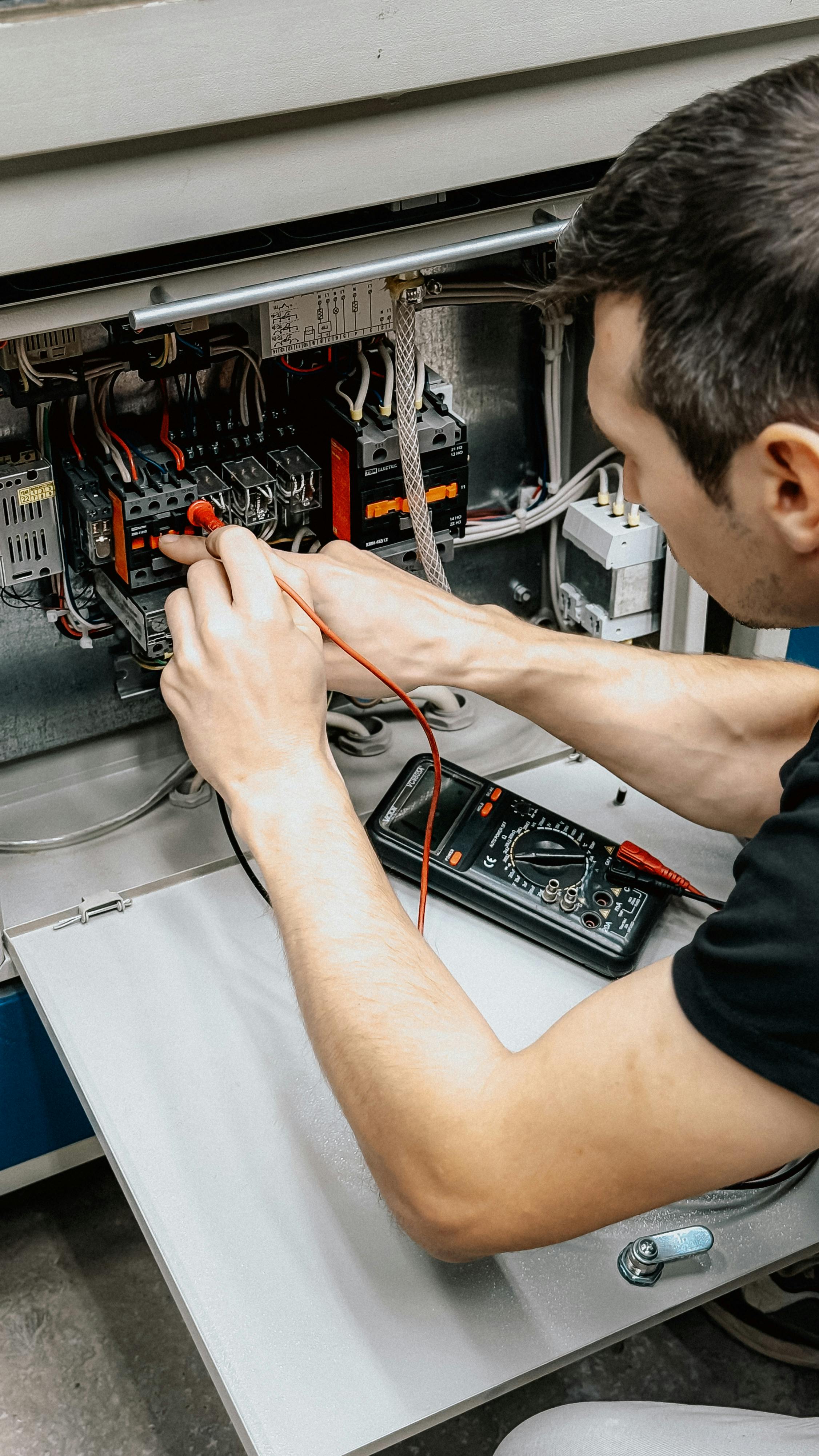In today’s world, electrical safety is paramount, especially in commercial and industrial environments where electrical equipment is frequently used. The process of test and tag is an essential part of maintaining electrical compliance.
It ensures that electrical appliances and equipment are safe for use and conform to the safety standards set by Australian regulations.

Test and tag Ballarat services, like those offered across Australia, are designed to help businesses meet their legal obligations and reduce the risk of electrical hazards.
This article will explore the importance of test and tag services in ensuring electrical compliance, the process involved, and how regular testing can help prevent accidents and promote safety.
What is Test and Tag?
Test and tag is a safety procedure where electrical appliances and equipment are inspected, tested, and tagged to verify that they are safe to use.
It involves testing for electrical faults, verifying insulation resistance, earth continuity, and checking for any potential issues that could cause an electrical hazard.
Once the testing is completed, the equipment is tagged with a label showing the test date and the next test due date.
Why is Test and Tag Important?
Test and tag services play a vital role in preventing electrical accidents. Faulty or untested electrical appliances pose a significant risk to both individuals and the property. Electrical faults can cause electrocution, fires, and equipment damage.
Regular testing and tagging ensure that all equipment meets Australian safety standards, helping businesses avoid potential hazards, reduce liability, and stay compliant with electrical regulations.
Understanding Electrical Compliance
Electrical compliance refers to adhering to the Australian Standards (AS/NZS 3760) for the testing, inspection, and maintenance of electrical equipment.
These standards require that electrical appliances, tools, and other equipment be regularly tested and inspected to ensure they are safe to use.
The Australian Standards for Electrical Safety
The AS/NZS 3760 standard specifies that electrical appliances must be tested periodically to ensure that they do not pose a risk of electric shock or fire.
Compliance with these standards is necessary not just for safety but also to avoid legal consequences. In commercial or workplace settings, test and tag services are a regulatory requirement that businesses must adhere to.
Failure to comply with these standards can result in severe penalties and increase the risk of electrical accidents.
Additionally, if an incident occurs, the business may be held liable for not adhering to electrical safety regulations. Regular testing helps businesses avoid such risks, ensuring that the workplace remains safe for employees and visitors.
The Test and Tag Process
The process of test and tag involves several key steps that are carried out to verify the safety of electrical equipment. These steps are designed to assess the condition of electrical appliances, identify potential risks, and ensure compliance with safety standards.
Step 1: Visual Inspection
The first step in the test and tag process is a thorough visual inspection of the electrical equipment.
A qualified technician checks for any visible signs of damage, wear, or faults, such as frayed cords, exposed wires, or cracks in the casing. This initial inspection helps identify obvious hazards that may require immediate attention.
Step 2: Electrical Testing
Once the equipment passes the visual inspection, it undergoes electrical testing. This step involves checking the electrical components to ensure they are functioning safely. The technician will test for:
- Earth Continuity: Ensuring that the earth connection is intact and functioning correctly.
- Insulation Resistance: Verifying that the insulation on electrical cables is intact and providing protection.
- Polarity: Checking that the live and neutral wires are connected correctly.
- Leakage Current: Measuring whether there is any current leakage that could pose a risk.
If the equipment passes these tests, it is deemed safe for use.
Step 3: Tagging the Equipment
After the testing, the equipment is tagged with a label that includes information such as:
- The date of the test
- The next test due date
- The technician’s details
- The pass or fail status
The tag serves as a clear indication that the equipment has been tested and is compliant with safety regulations.
The Role of Test and Tag Services in Reducing Electrical Hazards
Regular test and tag services are crucial in reducing the risk of electrical hazards. Faulty equipment, especially in workplaces, can lead to severe accidents, including electrical burns, fires, and even fatalities.
By ensuring that all electrical appliances are tested and tagged regularly, businesses can mitigate these risks and ensure a safer environment for their employees.
Preventing Electrical Fires
Electrical fires are one of the most common types of workplace fires. Faulty equipment, outdated wiring, or improper use of electrical devices can all contribute to the ignition of electrical fires.
Through test and tag services, businesses can identify faulty appliances or wiring before they pose a risk.
Protecting Employees from Electric Shock
Electric shock is another potential hazard that can result from untested or faulty electrical equipment.
Test and tag services ensure that all appliances and equipment are properly insulated and grounded, reducing the risk of electric shock. By performing regular inspections, businesses can ensure that their electrical equipment remains safe to use.
Complying with Workplace Health and Safety Regulations
For businesses, test and tag services are an essential part of complying with workplace health and safety regulations.
Regular testing ensures that equipment is safe, which is a key requirement under the Australian Work Health and Safety (WHS) regulations.
Failure to comply with these regulations can lead to legal and financial penalties. By using test and tag Ballarat services or services in your region, businesses can ensure compliance and reduce their liability.
When Should You Use Test and Tag Services?
The frequency of test and tag services depends on the type of electrical equipment and the environment in which it is used. Generally, the more frequently an appliance is used, the more often it needs to be tested.
Workplace Environments
In commercial and industrial settings, equipment should be tested every six months to ensure it remains safe to use. High-risk environments such as construction sites, factories, and healthcare settings require more frequent testing to reduce the likelihood of accidents.
Domestic Settings
For residential properties, test and tag services are not always legally required. However, it is still a good idea to have appliances tested regularly, particularly those that are heavily used or have been in service for many years.
A qualified technician can advise on the appropriate testing schedule based on the age and usage of the equipment.
How Test and Tag Services Help Businesses Stay Compliant
Businesses are required by law to ensure that their electrical systems and appliances are safe to use.
Regular test and tag services help businesses maintain compliance with safety regulations, ensuring that they avoid costly penalties or potential accidents.
By partnering with a reputable service provider, businesses can ensure that they meet their legal obligations and provide a safe working environment for their employees.
Frequently Asked Questions
How often should I have my equipment tested?
The frequency of test and tag services depends on the type of equipment and how frequently it is used. For high-risk environments, testing every six months is recommended. For lower-risk environments, testing once a year is typically sufficient.
Can I perform test and tag myself?
No, test and tag must be performed by a qualified technician who is familiar with Australian safety standards. Using a professional ensures that all tests are conducted correctly, and that the equipment meets safety regulations.
What happens if my equipment fails the test?
If your equipment fails the test, it will need to be repaired or replaced. The test and tag technician will provide a report detailing the issues and may offer advice on how to resolve them.
Conclusion
Test and tag services are essential for maintaining electrical safety and ensuring compliance with Australian safety standards. Regular testing helps protect employees, prevent equipment damage, and reduce the risk of electrical fires and shocks.
By using test and tag Ballarat services or other local professionals, businesses can ensure that their electrical systems remain safe, functional, and compliant with regulations.
Regular testing not only helps avoid potential accidents but also contributes to a safer and more efficient workplace.
